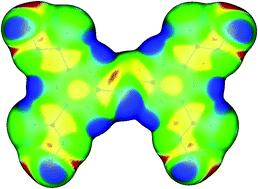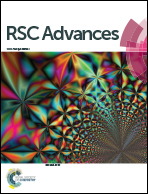Computational assessment of nitrogen-rich peracids: a family of peroxide-based energetic materials†
Abstract
Nitrogen-rich 5- and 6-membered compounds substituted with nitro and peracid groups were designed and investigated using density functional theory (DFT). The calculated energetic properties of peracid compounds were compared with those of some classical explosives such as TNT and RDX. The computed results show that most of the designed peracids possess large positive heats of formation (HOF) and much higher densities (1.79–1.89 g cm−3). The predicted detonation properties impart performance superior to that of TNT and comparable to that of RDX. The relatively better oxygen balance results in higher heat of detonation and more gaseous combustion products. Based on the predicted energetic properties of the designed compounds, the present study emphasizes the potential of the peracid group in developing new energetic materials.



 Please wait while we load your content...
Please wait while we load your content...